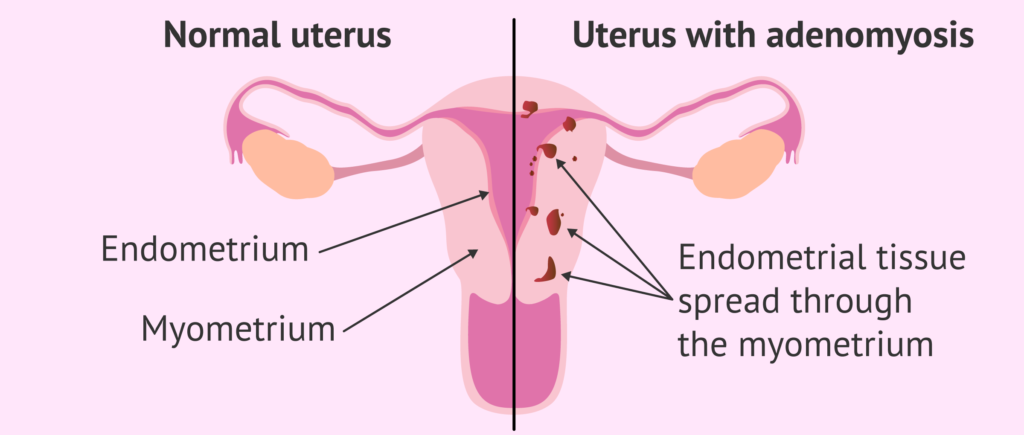Have you ever heard of Adenomyosis? It’s similar to endometriosis but almost like endo on steroids. While endometriosis invades the ovaries and fallopian tubes, adenomyosis attacks the muscle layer of the uterus, embedding itself deep within the back of the uterus, but also in other areas.
Adenomyosis cells behave like the cells lining the uterus. So when you have your period, these cells also bleed. But because they are trapped in the muscle layer, they form pockets of blood within the uterine muscle wall.
Ouch!
To help educate our patients and readers, Dr Elgey gave us a quick two minute run down on what Adenomyosis is.

What is Adenomyosis?
Adenomyosis is a debilitating condition of the uterine wall affecting women over the age of thirty. The cause is relatively unknown, but what we have established is that Adenomyosis forms in the inner lining of the uterus (the endometrium) and breaks through the muscle wall of the uterus (the myometrium). Adenomyosis can cause menstrual cramps, lower abdominal pressure, and bloating before menstrual periods and can result in heavy periods.
How Do You Diagnose Adenomyosis?
Adenomyosis often goes misdiagnosed or under diagnosed. Because of this we are still learning the Australian statistics. So when I see a patient who presents with heavier and prolonged periods, cramping and are over the age of 30, I will investigate for Adenomyosis. I will refer for a pelvic ultrasound, routine blood tests and an MRI if necessary.
How Do You Treat a Patient With Adenomyosis?
The most effective treatment for Adenomyosis is by having a hysterectomy. Understandably this is an outcome that can be difficult for a patient to choose. If I have a patient unsure of proceeding to hysterectomy, I suggest we use a ‘systemic hormone treatment’ to lengthen the time between periods. This is achieved by long cycling the contraceptive pill or using the Depo Provera injection three monthly.
Can Adenomyosis Affect The Chances of Falling Pregnant?
Yes. Often when a patient presents with conception difficulty and suffers from heavy periods, explorative testing returns positive for Adenoymosis.

Adenoymosis invades the lining of the uterus and this biological change makes for a more hostile environment for the embryo. This doesn’t necessarily mean all hope is lost for pregnancy. Instead, together we map out an achievable fertility path. I closely monitor my patients through tailored treatment to help conceive and carry a baby to term.
I Think I Have Adenomyosis. What Do I Need To Do To See You?
Don’t leave it any longer! Our rooms see both private and uninsured patients. All we need is for you to book in with your GP for a referral so you can receive a Medicare rebate at your appointment. Bring along any supporting history you have. A diary where you have dated pains and bleeding patterns is very helpful. Any pelvic assessments and your medical history is incredibly helpful to start your course of investigations.








